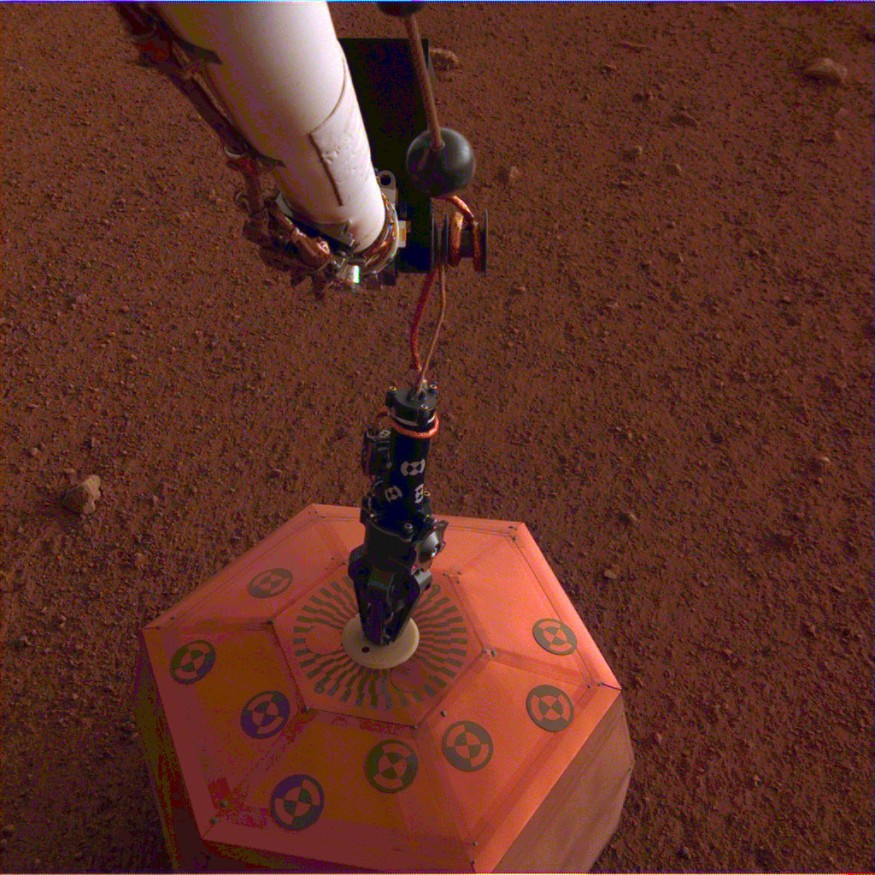
Did NASA just detect movement of Mars' crust? Or was it just a couple of rocks blown by the wind?
NASA's InSight lander has picked up on some interesting rumblings on the Earth-like planet. The spacecraft's exceptionally sensitive seismometer called the Seismic Experiment for Interior Structure (SEIS) can pick up very subtle vibrations. SEIS is from the French space agency, Centre National d'études Spatiales (CNES), and its partners.
SEIS was designed specifically to listen for so-called "marsquakes." Scientists are looking to study the seismic waves underneath the crust of Mars, thus allowing for a better understanding of the planet's inner structure.
However, sounds from Mars have been infrequent after the seismometer was set down by InSight's robotic arm. It has not transmitted its first rumble until this past April, and the quake turned out to be a very strange one. It was emitting a seismic signal at a much higher frequency compared to every other Mars sound that the science team has heard since then. Out of over 100 events detected by InSight to date, only 21 are strongly considered to be marsquakes. The remainder might be quakes as well, but the science team agrees that other causes are possible.
Quakes wouldn't even be audible to the human ear without special equipment—even if humans were on Mars. Even high-definition recordings by InSight aren't immediately apparent. One can, however, process the audio, play it at a higher speed, and observe. Here, you can actually listen to two marsquakes picked up by InSight on May 22 and July 25, respectively.
Take a moment to breathe it in: you just listened to sounds from another planet. The original unprocessed recording is actually outside the hearing spectrum of human beings, but this audio has been sped up to allow the public to hear the rumbles for themselves. In between the sounds of the wind and the movements of InSights robotic arm, you can even hear the dinks caused by the friction of the seismometer.
On Earth, cracks in the crust seal over time, after water fills them with new minerals. "Sound waves can, therefore, travel uninterrupted when they go through old fractures," NASA says.
On the surface of the moon, however, the sound waves take much more time to scatter. Mars has a surface littered with craters similar to the moon's, and these seismic waves take longer than a minute to dissipate, whereas earthquakes go by much quicker. This suggests that the surface of Mars is similar to both the Earth's and the moon.
As you can tell, the sounds are incredibly prominent and are almost similar to raindrops pattering on a roof. A strange whistling sound is heard. The InSight team believes that this is from interference in the system's components.
In addition, the scientists have had to sift through a lot of the noise that SEIS is able to hear. Wind gusts are a common occurrence so much so that the team has figured out that quakes might be easier to detect at night as daytime's increased temperature creates more wind interference.
The first vibrations transmitted by the lander were very exciting for Constantinos Charalambous who is a team member for Project InSight. He goes on to say that one can easily imagine what is happening on Mars as InSight records on the open landscape.












